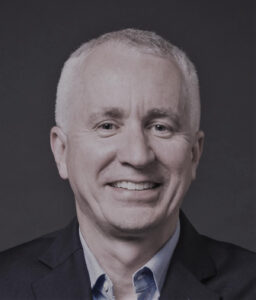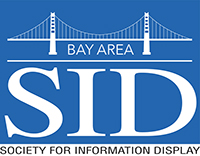Archives 2021
December 8 2021
2025: A Space Opportunity
Rob Meyerson, Delalune Space, Founder & CEO
Presentation Abstract
Rob Meyerson
 Rob Meyerson is the founder and CEO of Delalune Space, a management consulting company focused on the aerospace, mobility, technology and investment sectors. He is an angel investor, advisor, and director for companies operating in the hypersonics, space, mobility, technology, and telecommunications industries. Rob has more than 30 years’ experience in the aerospace industry, including serving as the president of Blue Origin from 2003 to 2017. Rob earned a B.S. degree in aerospace engineering from the University of Michigan and a master’s degree in industrial engineering from the University of Houston. He is a Fellow of the American Institute for Aeronautics and Astronautics (AIAA).
Rob Meyerson is the founder and CEO of Delalune Space, a management consulting company focused on the aerospace, mobility, technology and investment sectors. He is an angel investor, advisor, and director for companies operating in the hypersonics, space, mobility, technology, and telecommunications industries. Rob has more than 30 years’ experience in the aerospace industry, including serving as the president of Blue Origin from 2003 to 2017. Rob earned a B.S. degree in aerospace engineering from the University of Michigan and a master’s degree in industrial engineering from the University of Houston. He is a Fellow of the American Institute for Aeronautics and Astronautics (AIAA).
November 10 2021
Presentation Abstract
Alastair Grant
 Alastair joined DigiLens in 2011 and is DigiLens’ chief optical architect, responsible for R&D development of DigiLens’ holographic waveguides and associated fabrication and exposure equipment for both near to eye AR and automotive AR applications.
Alastair joined DigiLens in 2011 and is DigiLens’ chief optical architect, responsible for R&D development of DigiLens’ holographic waveguides and associated fabrication and exposure equipment for both near to eye AR and automotive AR applications.
Over the past 25+ years Alastair has held positions senior and principal optical engineering positions with BAE SYSTEMS, OPTICS1/SAFRAN, and Panavision, where he has successfully innovated, designed, built, tested and deployed an extensive range of optical solutions. Alastair’s broad optical experience includes commercial, defense, visible, infrared, imaging, illumination, classical and holographic / diffractive optics.
Alastair holds a BSc.(Hons) in Optoelectronics and Laser engineering at Heriot-Watt University, Edinburgh, Scotland, UK, and an MSc. in Electronics from University of Glasgow, Scotland, UK.
October 13 2021
How Dynepic’s DX Platform of Platforms Provides System and Data Synthesis to Solve Key Training Challenges in the US Military
Krissa Watry, Co-Founder and CEO of Dynepic
Presentation Abstract
Extended Reality (XR) technologies are primed to revolutionize training; however, there is a critical lack of secure infrastructures that support the discovery, distribution, and display of innovative XR training content. Moreover, very few learning management systems (LMSs) support the display, distribution, and performance tracking of XR technologies which is a critical barrier to XR technology adoption within the US Military. This presentation will discuss some of the challenges that currently exist with the adoption and implementation of XR technologies, specifically within the US Military. To overcome these challenges, Dynepic has developed the DX Platform. The DX Platform is a “Platform of Platforms” that provides system and data synthesis to solve the critical challenges experienced by US Military training. The presentation will focus on the DX Platform’s displays for third-party integration, a central hub for discovery and distribution of XR content, and LMS Dashboards for displaying key performance information across a variety of user management types. Finally, this presentation will present results from the Air Force's Maintenance Training Next program that used the DX Platform to discover XR content, create XR training, and deliver innovative training courses – all within XR-optimized displays.
About Dynepic:
Launched in 2014, Dynepic, Inc. is a woman- and service-disabled veteran founded tech company based out of Reno, Nevada. Dynepic’s DX Platform is secure, device- and software- agnostic infrastructure with open API’s, LMS/LRS, and a central training hub to build an open ecosystem for XR to power the future of multi-dimensional knowledge for a better tomorrow. www.dynepic.com
Krissa Watry
 Krissa Watry is Co-Founder and CEO of Dynepic where they are powering the future of knowledge with their DX Platform. She is an experienced principal investigator, program manager, product designer, inventor, engineer, entrepreneur, military veteran, rocket scientist, and corporate executive. Krissa holds a BS in Engineering Mechanics from the US Air Force Academy, where she was the top graduate in her major and was a Draper Laboratory Fellow achieving an MS in Mechanical Engineering from MIT focused in product design. As a Captain in the USAF, Krissa was the Chief Engineer for Milstar at 4th Space Operations Squadron, managing the operations of the ultra-secure communication satellite constellation in GEO.
Krissa Watry is Co-Founder and CEO of Dynepic where they are powering the future of knowledge with their DX Platform. She is an experienced principal investigator, program manager, product designer, inventor, engineer, entrepreneur, military veteran, rocket scientist, and corporate executive. Krissa holds a BS in Engineering Mechanics from the US Air Force Academy, where she was the top graduate in her major and was a Draper Laboratory Fellow achieving an MS in Mechanical Engineering from MIT focused in product design. As a Captain in the USAF, Krissa was the Chief Engineer for Milstar at 4th Space Operations Squadron, managing the operations of the ultra-secure communication satellite constellation in GEO.
Krissa spent over 10 years designing, building, launching and operating cutting-edge space systems for organizations like NASA, DoD, and others, including spaceflight hardware that docked with the International Space Station. A seasoned leader and program manager, Krissa has over 15 years of experience delivering complex programs on time and under budget. In addition, Krissa is a multi-preneur with over 10 years as a technology executive who has founded multiple companies and commercialized a multitude of hardware and software products across the sports, education, and defense industries. Krissa holds 10 patents and is recognized as a Global Innovator and Entrepreneur by President Obama and a Forbes Next 1000.
September 5 2021
Presentation Abstract
In July, 2021, SID’s International Committee for Display Metrology (ICDM) announced an update to the Information Display Measurements Standard (IDMS), which is the display industry’s bible for display measurement and characterization. The update is called IDMS v1.1, and it is the first major update to the IDMS in over nine years. Over 250 pages of new content covers areas such as color capability characterization, high dynamic range displays, new temporal methods, and more than 100 pages on evaluation methods of near-eye displays for AR and VR. Prior content from v1.0 has also been expanded in many areas such as 3D methods, notably for light field displays, extension of the reflection chapter to include transmissive displays, spatial performance updates, and several other improvements. The update is both commercially and scientifically significant. This talk will take a look inside the newly-released IDMS, explaining how the new version addresses the needs of modern displays using the latest metrology methods.
IDMS v1.1 is available as a free download at the following link:
https://www.sid.org/Standards/ICDM#8271483-idms-download
Brian Berkeley
 Brian Berkeley received S.B. and M.S. degrees in electrical engineering from M.I.T. and Carnegie-Mellon University, respectively. He had a 20-year career at Apple Inc., starting as display engineer on the first Macintosh. He put color on the Macintosh, led all Apple display development, and led hardware development for the first iMac computer. In 2003, he took on a role as VP of Engineering at Samsung Display in South Korea. In his 8 years in Korea, he had major successes in LCD and OLED research and panel development. In early 2012, he moved back to Silicon Valley to start up Samsung Display’s USA laboratory, which he led for three years. Since 2015, he has been an industry consultant as Principal for Highlight Display, LLC. Mr. Berkeley has over 50 display industry publications with over 750 citations. He has been an SID member for over 30 years and has served on the SID Program Committee for over 25 years. He served as the SID Symposium Technical Program Chair (2000) and General Chair (2002), and served on the SID Executive Board for 10 years (2006-2016), including two years as SID’s President (2012-2014). He helped rebuild SID during a critical transition period. He was awarded SID Fellow in 2012 and has received six Presidential Citations for his service to SID. He currently remains active with SID on its Program Committee, the Display Industry Awards Committee, and as an Executive Committee member of SID’s International Committee for Display Metrology (ICDM).
Brian Berkeley received S.B. and M.S. degrees in electrical engineering from M.I.T. and Carnegie-Mellon University, respectively. He had a 20-year career at Apple Inc., starting as display engineer on the first Macintosh. He put color on the Macintosh, led all Apple display development, and led hardware development for the first iMac computer. In 2003, he took on a role as VP of Engineering at Samsung Display in South Korea. In his 8 years in Korea, he had major successes in LCD and OLED research and panel development. In early 2012, he moved back to Silicon Valley to start up Samsung Display’s USA laboratory, which he led for three years. Since 2015, he has been an industry consultant as Principal for Highlight Display, LLC. Mr. Berkeley has over 50 display industry publications with over 750 citations. He has been an SID member for over 30 years and has served on the SID Program Committee for over 25 years. He served as the SID Symposium Technical Program Chair (2000) and General Chair (2002), and served on the SID Executive Board for 10 years (2006-2016), including two years as SID’s President (2012-2014). He helped rebuild SID during a critical transition period. He was awarded SID Fellow in 2012 and has received six Presidential Citations for his service to SID. He currently remains active with SID on its Program Committee, the Display Industry Awards Committee, and as an Executive Committee member of SID’s International Committee for Display Metrology (ICDM).
August 11 2021
Presentation Abstract
Reflective Liquid Crystal Displays (RLCDs) provide unique opportunities for low-power sunlight-readable displays. The manufacturing is well-established and cost-effective. The performance in bright ambient environments is competitive with some of the best displays today at a fraction of the power. However, under low ambient lighting, the displays appear gray and washed out. The industry’s solution has been to make the RLCDs partially transmissive and use a backlight. These “transflective” LCDs sacrifice much of the power, color and cost advantages of a purely reflective LCD.
Reflective LCDs are challenging to front-light because they are more mirror-like and anisotropic than the electrophoretic displays used in e-readers. This complex reflectivity profile enables improved color performance, but requires precisely functionalized frontlighting. Since the light source is on the viewer-side of the display, the traditional optical films used in backlighting cannot be utilized. In this talk, we present current methods for optimizing the performance of the RLCD module with a transparent, functionalized frontlight. We show that properly matching the Azumo frontlight to the RLCD reflectance map improves the color and contrast without sacrificing the sunlit performance.
Dr. Tony Nichol
 Dr. Tony Nichol is CTO and a founding member of Azumo with nearly 20 years of experience in lightguide development. As a National Science Foundation Research Fellow, he holds a PhD from MIT focusing on 3D diffractive optical systems and nanofabrication. His expertise is in non-imaging optical design, micro/nano fabrication, precision manufacturing and numerical simulation. He previously worked in 3M’s Optical Systems Division and is listed as inventor on over 80 U.S. and foreign patents. He holds a BS in mechanical engineering from the University of Wisconsin.
Dr. Tony Nichol is CTO and a founding member of Azumo with nearly 20 years of experience in lightguide development. As a National Science Foundation Research Fellow, he holds a PhD from MIT focusing on 3D diffractive optical systems and nanofabrication. His expertise is in non-imaging optical design, micro/nano fabrication, precision manufacturing and numerical simulation. He previously worked in 3M’s Optical Systems Division and is listed as inventor on over 80 U.S. and foreign patents. He holds a BS in mechanical engineering from the University of Wisconsin.
July 14 2021
The Enemy's Gate is Down: A Completely Different Approach to Immersive AR Glasses
Dr. Nikhil Balram, CEO of EyeWay Vision Inc.
Presentation Abstract
Current approaches to AR Glasses face technology limitations that force a fundamental trade-off between performance and form factor. Some have prioritized form-factor and produced a "smart-watch-on-the-face" while others have attempted a compromise that resulted in neither a compelling experience nor an acceptable form-factor. AR attempts to hack the way we see reality, placing virtual objects in the real world around us. Our visual system is highly evolved and interacting with it in an unnatural form creates distraction and discomfort. Truly immersive AR addresses this by enabling us to see virtual content in a natural manner that integrates it seamlessly with the real world. EyeWay has taken a completely different approach from all current ones to develop a truly immersive AR system that will disrupt large markets like entertainment, gaming, e-learning and e-commerce by providing a 10x visual experience and a pathway to glasses form factor.
Dr. Nikhil Balram
 Dr. Nikhil Balram is CEO of EyeWay Vision Inc. (EVI), a California subsidiary of EyeWay Vision Ltd. focused on developing immersive AR glasses. He previously led the Display Group at Google, which was responsible for developing display systems for all Google consumer hardware, including AR and VR. Previous roles include CEO of Ricoh Innovations Corporation, VP and GM of Digital Entertainment BU at Marvell and CTO of the Display Group at National Semiconductor. He has received numerous awards including the Otto Schade Prize from the Society for Information Display (SID) and a Gold Stevie® Award for Executive of the Year in the Electronics category. Dr. Balram is a Fellow of the SID since 2012 and was Program Chair for Display Week 2019 and General Chair for Display Week 2021. Dr. Balram received his B.S., M.S. and Ph.D. in electrical engineering from Carnegie Mellon University.
Dr. Nikhil Balram is CEO of EyeWay Vision Inc. (EVI), a California subsidiary of EyeWay Vision Ltd. focused on developing immersive AR glasses. He previously led the Display Group at Google, which was responsible for developing display systems for all Google consumer hardware, including AR and VR. Previous roles include CEO of Ricoh Innovations Corporation, VP and GM of Digital Entertainment BU at Marvell and CTO of the Display Group at National Semiconductor. He has received numerous awards including the Otto Schade Prize from the Society for Information Display (SID) and a Gold Stevie® Award for Executive of the Year in the Electronics category. Dr. Balram is a Fellow of the SID since 2012 and was Program Chair for Display Week 2019 and General Chair for Display Week 2021. Dr. Balram received his B.S., M.S. and Ph.D. in electrical engineering from Carnegie Mellon University.
June 16 2021
Highlights From Display Week 2021
Radu Reit, Paul Semenza and Sihui He
Presentation Abstract
During this special BASID seminar, we have some prominent experts in the field come in to give their take on Display Week 2021. Radu Reit, Chair of Marketing with the SID, will cover the successful outcomes of Virtual Display Week 2021 and how SID was able to reach an audience of more than 10,000 for the first time using the new and improved virtual platform. Paul Semenza will summarize display market updates and highlight industry and technology developments presented at Display Week. Sihui He will summarize the many exciting developments in the field of near-eye displays presented at SID Display Week 2021.
Radu Reit

Paul Semenza

Sihui He

May 12 2021
Presentation Abstract
This presentation will outline the selection, use and operation of the E Ink display in Reviver’s Digital License Plate (DLP). Reviver, creators of the world’s first Digital License Plate, has sponsored legislation, defined the market, as well as designed and brought to market the DLP. Used in place of the traditional metal license plate, the DLP provides for automated registration management and compliance as well as providing flexibility in the display of the plate information and personalization. Robert Wood, Reviver’s President and CEO, will present on the Company’s Rplate product including the specifications and selection of the E Ink panel for use in the DLP.
Robert A. Wood
 Robert is President and Chief Executive Officer of Reviver.
Robert is President and Chief Executive Officer of Reviver.
Robert has served in executive operations and technology positions in a number of industries over his career. His extensive experience in operations management and strategy, as well as technology systems and process improvements has given him unique capabilities as a technology and operations executive.
Prior to Reviver, Robert served as the Chief Operating Officer and Chief Technology Officer for Trimark Associates, Inc. In this capacity, Robert oversaw Trimark’s national product and engineering operations and strategic execution.
Previously, Robert was the Chief Operating Officer of Solar Power, Inc. (SPI), a publicly-traded renewable energy company with offices in California, New Jersey, China, Italy, and Greece. As the company’s COO, Robert oversaw and managed all aspects of the organization’s day-to-day international operations including planning, supply chain, engineering, information technology, asset management, construction, procurement, and quality control.
Prior to serving as the COO of SPI, Robert was the Co-Founder, Chief Operating Officer, and Chief Technology Officer for Calnet Business Bank. Calnet was a northern California commercial financial institution that Robert, along with a small group of organizers founded in 2000. Robert was the key person in building Calnet into a successful institution, culminated in its merger with a larger institution in late 2006.
Prior to Calnet, Robert served in a variety of executive and management positions in the financial and technology industries.
Robert is well versed in executive management, financial operations management, technology development management, operational quality management and compliance, including standard quality improvement processes and Sarbanes-Oxley.
He has served on or on behalf of board of directors and board committees to provide and sustain sound business practices across varied stages, structures, and environments.
April 14 2021
Secrets of the Looking Glass, from Capture, Processing, to Display
Shawn Frayne, co-founder and CEO, Looking Glass Factory
Presentation Abstract
While the world has been fascinated by holographic and light field technology, Looking Glass Factory is the first company to ship consumer-ready, multi-viewer light field displays. Looking Glass displays have been garnering attention since they first launched back in 2018. More recently, the personal holographic display, Looking Glass Portrait, received ~10,000 orders via a crowdfunding effort. With this talk, Looking Glass Factory CEO, Shawn Frayne, will dive into the technology and provide an inside view of how the displays work and what makes them different, from capture to processing to display.
Shawn Frayne
 A graduate of MIT, Shawn Frayne has been reaching towards the dream of the hologram for over 20 years. Shawn got his start with a classic laser interference pattern holographic studio he built in high school, followed by training in advanced holographic film techniques at MIT. He has been awarded dozens of patents around the world, the Popular Mechanics Breakthrough Award, and noted as one of the ‘20 Best Brains Under 40’ by Discover Magazine.
A graduate of MIT, Shawn Frayne has been reaching towards the dream of the hologram for over 20 years. Shawn got his start with a classic laser interference pattern holographic studio he built in high school, followed by training in advanced holographic film techniques at MIT. He has been awarded dozens of patents around the world, the Popular Mechanics Breakthrough Award, and noted as one of the ‘20 Best Brains Under 40’ by Discover Magazine.
Shawn serves as co-founder and CEO of Looking Glass Factory working between their Brooklyn, NY and Hong Kong offices.
